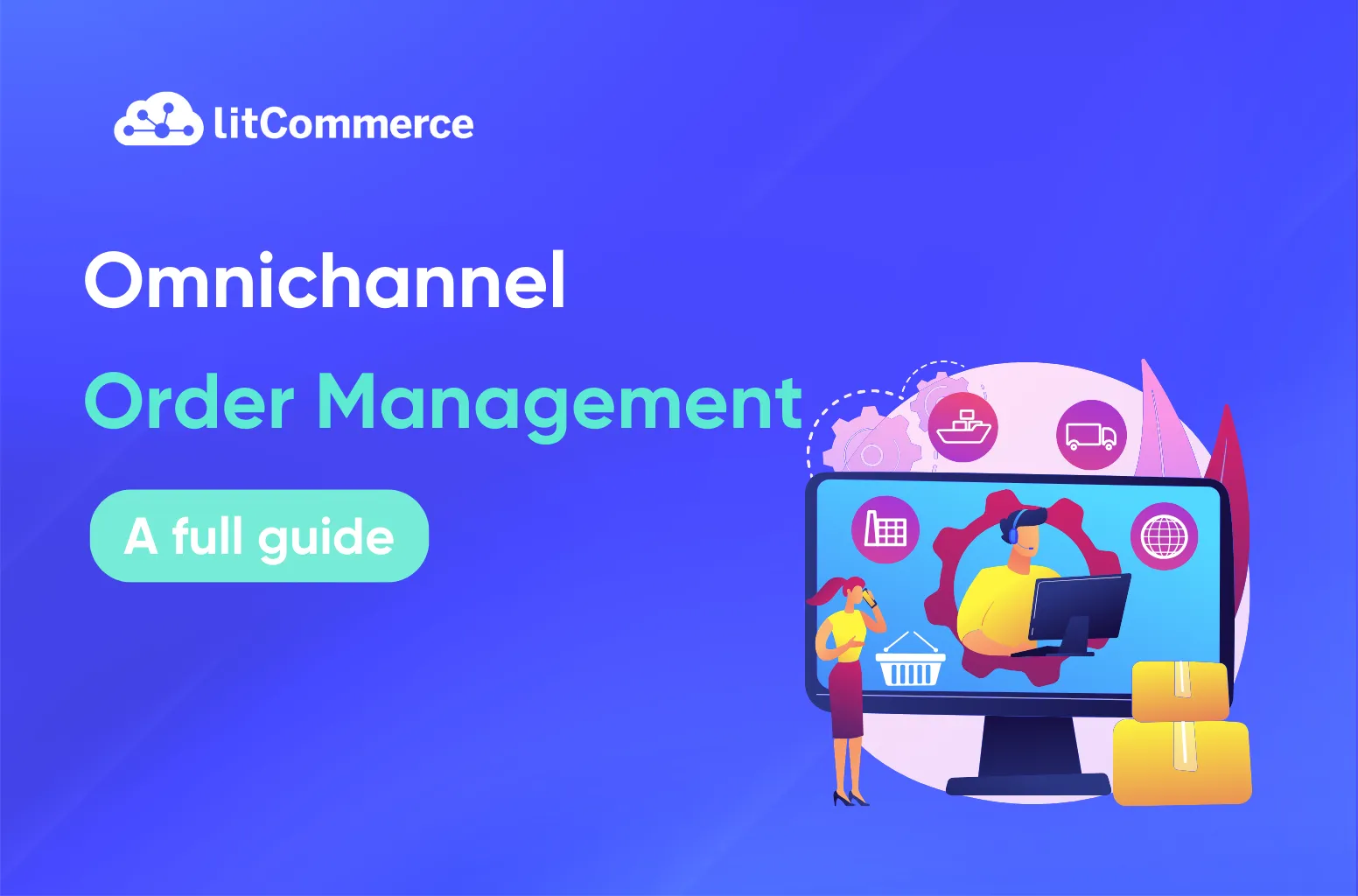Omnichannel order management is the process of managing orders across multiple sales channels, such as online stores, brick-and-mortar shops, and mobile apps. It ensures a seamless customer experience by providing consistent order tracking, fulfillment, and delivery options regardless of the channel used.
This guide goes deeper into the details of omnichannel order management and offers useful tips for ecommerce sellers aiming to improve their processes. What you can find in this guide:
- How does omnichannel order management work
- Key components of omnichannel order management
- Benefits of omnichannel order management
- Key features of an omnichannel order management system
- Best practices for optimizing omnichannel order management
- Future trends in omnichannel order management
Let’s dive right in!
How Does Omnichannel Order Management Work
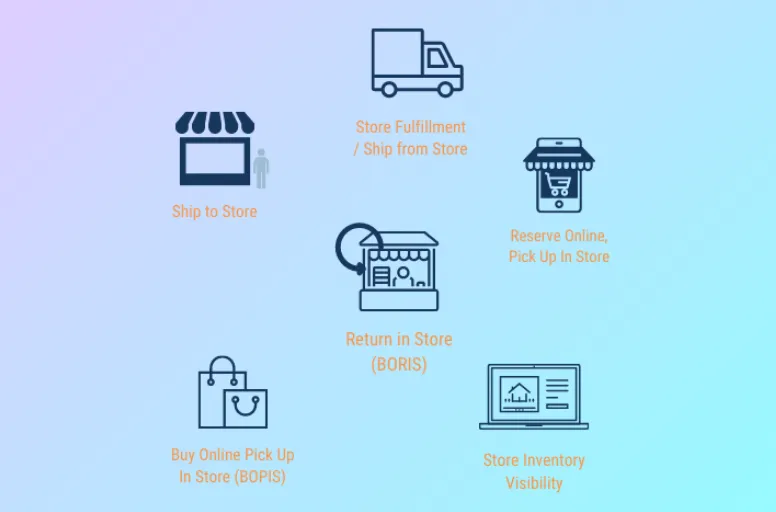
Implementing an omnichannel order management system requires a single view of customers, their order history, and inventory levels across all channels. Omnichannel order management allows sellers to manage customer orders across all sales channels.
This means sales channels such as:
- Website
- Shopping app
- Social media
- Mobile
- Call center
- Brick-and-mortar shops
A centralized view of all sales channels, orders, and customers helps ensure that buyers always get the products they want, when and where they want them. Omnichannel retailer order management can be a challenge, but it’s necessary to provide the best possible shopping experience.
With the right omnichannel strategy in place, you can provide your customers with convenience and a buyer-centric experience.
Key Components of Omnichannel Order Management
1. Real-time inventory management
Real-time inventory management is a key component in omnichannel order management. It involves continuously tracking stock levels across all sales channels—both online and offline—ensuring accurate, up-to-date information.
When an item is bought or returned, the system quickly updates the inventory so you don’t run out of stock or oversell. This visibility helps businesses manage their stock better, fill orders faster, and avoid disappointing customers with incorrect inventory info.
2. Order processing and fulfillment

Order processing and omnichannel order fulfillment is the process of streamlining how orders are received, processed, and delivered across different channels.
Once an order is placed, the system automatically selects the best fulfillment method, such as shipping from a warehouse, local store pickup, or direct delivery from the manufacturer. This ensures fast and accurate order fulfillment, reduces processing time, and enhances customer satisfaction by providing flexible delivery options.
3. Integration with sales channels
Integration with sales channels means connecting various platforms like eCommerce sites, physical stores, mobile apps, and marketplaces into a unified system. This integration allows for seamless data flow, ensuring that customer information, order details, and inventory levels are consistent across all channels.
As a result, businesses can provide a cohesive shopping experience where customers can switch between channels effortlessly while enjoying consistent service and product availability.
Benefits of Omnichannel Order Management
1. Enhanced customer experience & satisfaction
Omnichannel order management significantly enhances the customer experience by offering seamless, flexible shopping options across various channels. Customers can start shopping online, continue on a mobile app, and finish in-store, all while enjoying a consistent experience.
Features like real-time inventory visibility, multiple delivery options, and easy returns increase customer satisfaction. This way builds trust and loyalty, as customers appreciate the convenience and reliability of a well-integrated shopping experience.
2. Increased sales and revenue

By integrating multiple sales channels, omnichannel order management boosts sales and revenue. Customers can purchase products through their preferred platform, which increases overall sales opportunities.
Additionally, the ability to offer personalized promotions and cross-channel marketing campaigns enhances the chances of upselling and cross-selling.
3. Enhanced operational efficiency
Omnichannel order fulfillment streamlines operations by centralizing order processing, inventory management, and fulfillment across all channels. This reduces the need for manual intervention, minimizes errors, and speeds up the entire order lifecycle.
Also, automated workflows ensure that orders are processed quickly and accurately, leading to faster delivery times and fewer customer service issues. The efficient coordination between various departments, from sales to logistics, optimizes resources and improves overall operational performance.
4. Reduced costs and errors
By integrating all sales channels into a single system, omnichannel order management helps reduce costs and errors. Automated processes eliminate the need for repetitive manual tasks, reducing labor costs and minimizing the risk of mistakes. Improved inventory management prevents overstocking or stockouts, saving costs associated with excess inventory or lost sales.
Additionally, efficient order processing and fulfillment reduce the likelihood of returns or exchanges, further cutting operational expenses.
5. Better inventory management and visibility

Omnichannel order management offers better inventory management by providing real-time visibility into stock levels across all channels. This ensures that businesses can accurately track and allocate inventory, preventing stockouts or overstocking.
With centralized inventory data, companies can make informed decisions about restocking, transferring goods between locations, and optimizing storage space. Improved visibility also enables better demand forecasting, helping businesses stay ahead of customer needs and maintain optimal inventory levels.
Learn more with a guide to omnichannel inventory management.
Key Features of an Omnichannel Order Management System
An effective omnichannel order management system is built on key features that ensure seamless operations and enhance the customer experience. These features work together to provide businesses with the tools they need to manage orders across multiple channels efficiently, from inventory tracking to delivery.
Below are 6 main features of an omnichannel order management system:
1. Real-time inventory visibility and updates
Real-time inventory visibility allows businesses to track stock levels across all sales channels instantly. The omnichannel order management solutions with this feature will update inventory automatically whenever a sale is made, preventing stockouts and overstocking.
This ensures that customers always have accurate information on product availability.
2. Automated order processing and fulfillment

Automated order processing and fulfillment streamline the entire order lifecycle, from receiving the order to delivering the product. That helps automatically route orders to the appropriate fulfillment center or store based on factors like location and stock availability.
This automation speeds up the process, reduces errors, and ensures timely delivery, improving customer satisfaction.
3. Seamless integration with eCommerce platforms
Seamless integration with eCommerce platforms is crucial for an omnichannel order management system. It connects online stores, mobile apps, and marketplaces to a single, unified system. The integration ensures consistent data flow across all channels, allowing businesses to manage orders, inventory, and customer interactions more efficiently.
4. Centralized order tracking and management
Centralized order tracking and management enable businesses to monitor and control all orders from a single dashboard. This feature provides real-time updates on order status, shipping progress, and delivery confirmations.
By centralizing this information, businesses can quickly address issues, improve customer communication, and ensure that orders are handled efficiently across all channels.
5. Flexible shipping and delivery options
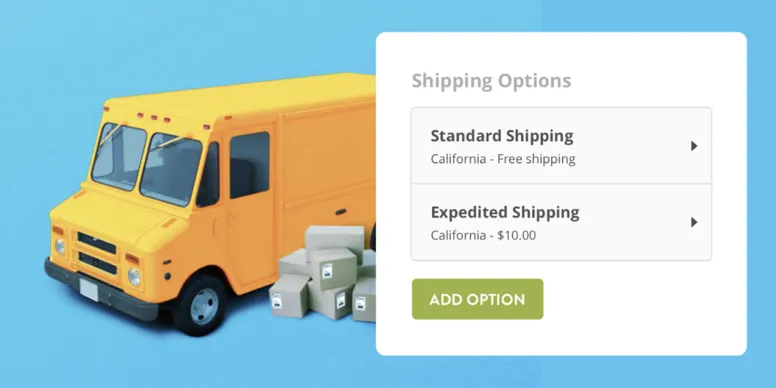
Flexible shipping and delivery options meet diverse customer needs, offering choices like in-store pickup, home delivery, or even same-day shipping. Omnichannel order fulfillment logistics should optimize these options based on factors like customer location and inventory availability.
This flexibility enhances customer satisfaction by providing convenient delivery solutions tailored to individual preferences.
6. Comprehensive reporting and analytics
Comprehensive reporting and analytics are crucial features of the omnichannel order management system. It provides valuable insights into sales performance, customer behavior, and inventory management, helping businesses identify trends, optimize operations, and make informed decisions.
By analyzing this data, companies can better understand their customers, forecast demand, and adjust strategies to improve efficiency and profitability.
Best Practices for Optimizing Omnichannel Order Management
1. Utilizing a single order management system for all channels
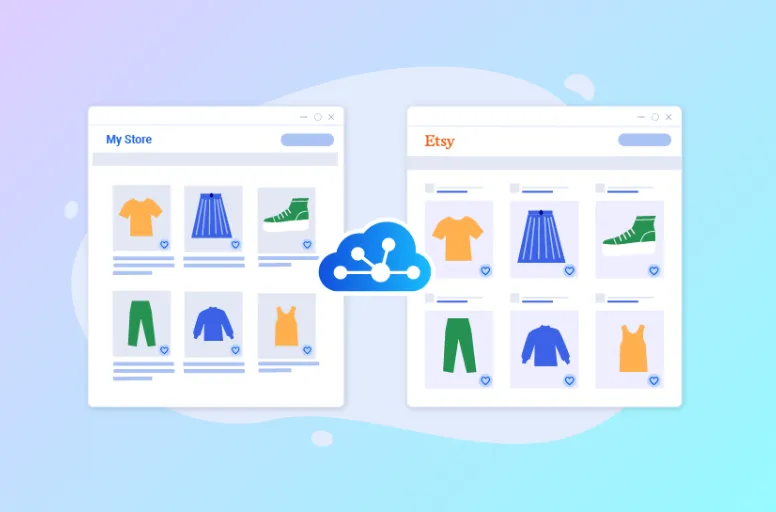
Using a single order management system across all sales channels simplifies the process. It ensures consistency and simplifies operations, allowing businesses to manage inventory, orders, and customer interactions from one platform.
That helps reduce the complexity of handling multiple systems, improve efficiency, and provide a cohesive experience for both customers and employees.
2. Leveraging real-time data for accurate information
Leveraging real-time data is essential for maintaining accurate information on inventory, orders, and customer preferences. Real-time updates ensure that stock levels are current, preventing overselling or stockouts.
This accuracy enables businesses to make informed decisions quickly, enhancing their ability to meet customer demands and optimize overall operations.
3. Automating order processing to reduce errors and delays
Automating order processing is a best practice for minimizing errors and speeding up fulfillment when handling multichannel order management. Automation reduces the need for manual intervention, which often leads to mistakes and delays.
By automating tasks like order routing, inventory updates, and shipping, businesses can ensure that orders are processed swiftly and accurately, leading to higher customer satisfaction.
4. Investing in customer service tools for efficient support

Maintaining consistent customer communication is crucial for building trust, managing expectations, and encouraging loyalty. That’s why you should invest in omnichannel order management software, helping ensure smooth communication throughout the order process.
Sellers can automate notifications like order confirmations, shipping updates, and delivery alerts to keep customers informed.
Additionally, integrating customer service channels like live chat and social media allows for quick responses to inquiries, providing excellent support. Open communication helps improve the shopping experience, boosting customer satisfaction and loyalty.
5. Continuously monitoring customer feedback and adjusting processes
Customer feedback provides valuable information on what’s working well and where improvements are needed. By actively listening to feedback and making adjustments, businesses can refine their processes, address pain points, and continuously enhance the customer experience.
That can lead to increased loyalty and satisfaction.
How can you manage omnichannel customer feedback? Click here to learn more about omnichannel customer service.
Future Trends in Omnichannel Order Management
The multichannel order management market was valued at $2.7 billion in 2022 and is expected to grow to $4.2 billion by 2027, with an annual growth rate of 9.4%. Hence, to keep up with this development, you should keep pace with the below trends:
1. Artificial intelligence (AI) and machine learning (ML)
AI and ML will be used to predict demand, optimize inventory levels, and improve order fulfillment. For instance, AI-powered systems can analyze historical data to forecast future sales and prevent stockouts.
2. Real-time inventory visibility
Retailers will have near real-time visibility into their inventory across all channels, enabling them to fulfill orders from the closest fulfillment center or store. This will reduce shipping times and improve customer satisfaction.
3. Delivery flexibility
Consumers will expect more flexibility in delivery options, including same-day, next-day, and in-store pickup. Retailers will need to invest in infrastructure and partnerships to meet these demands for their omnichannel order fulfillment logistics.
4. Sustainable shipping
As sustainability becomes a growing concern, businesses will focus on reducing their environmental impact. This could involve using eco-friendly packaging, optimizing delivery routes, and offering carbon-neutral shipping options.
Case Studies of Successful Omnichannel Order Management
To see how omnichannel order management solutions can be implemented in practice, let’s explore some real-world case studies.
1. Walmart
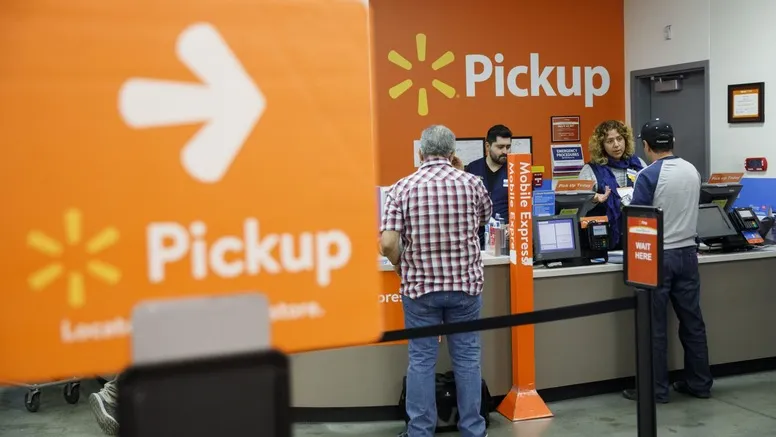
Walmart is a big retailer that uses an omnichannel order management system. This system lets customers shop online, in-store, or through the mobile app, with the option to deliver their orders to their homes or a nearby store.
Walmart also offers a “Pickup Today” feature, where customers can order online and pick up their items at a store on the same day. This approach makes shopping fast and convenient, without the wait for delivery.
2. Best Buy
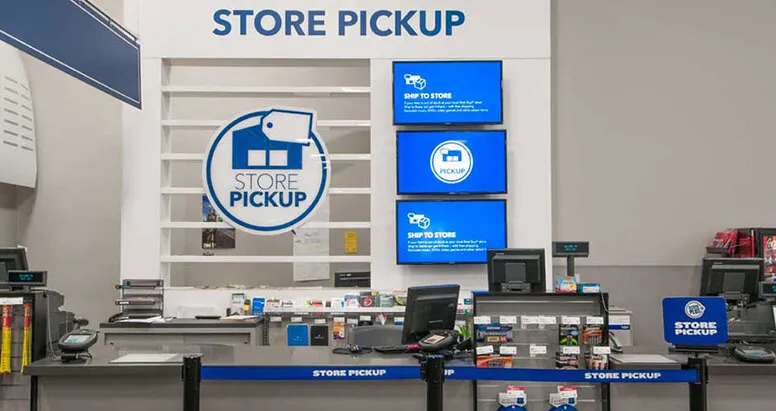
Best Buy is another well-known retailer that uses an omnichannel order management system. Similar to Walmart, customers can shop online, in-store, or through the mobile app.
Best Buy also provides a “Buy Online, Pickup In-Store” option, allowing customers to order items online and pick them up at a nearby store the same day. This system makes it easy and convenient for customers to get what they need without waiting for delivery.
Omnichannel Order Management System – FAQs
Omnichannel order management can be automated using advanced software. This software integrates different sales channels, centralizes order processing, optimizes inventory, automates fulfillment, and provides customer updates. By automating these tasks, businesses can improve efficiency, reduce errors, and offer a better customer experience. An omnichannel order management system is a software solution that helps businesses manage orders across multiple sales channels, such as online stores, mobile apps, and physical stores. It integrates inventory, order processing, and fulfillment to provide a seamless customer experience. Omnichannel in supply chain management refers to a strategy that enables businesses to provide a consistent and integrated customer experience across all sales channels. It involves coordinating inventory, order fulfillment, and customer service to ensure a seamless shopping journey. The primary purpose of an omnichannel order management system is to improve customer satisfaction and increase sales. By providing a unified and seamless shopping experience, businesses can build customer loyalty, reduce cart abandonment, and increase overall revenue.
Conclusion
Effective omnichannel order management is essential for ecommerce sellers who operate across various sales channels. By understanding the advantages, challenges, essential features, and implementation strategies of omnichannel order management, you can set your business up for long-term growth and stay competitive in the dynamic world of ecommerce.
If you want helpful guides on Omnichannel management, have a look at our eCommerce Blog. For instant support, feel free to contact us!

